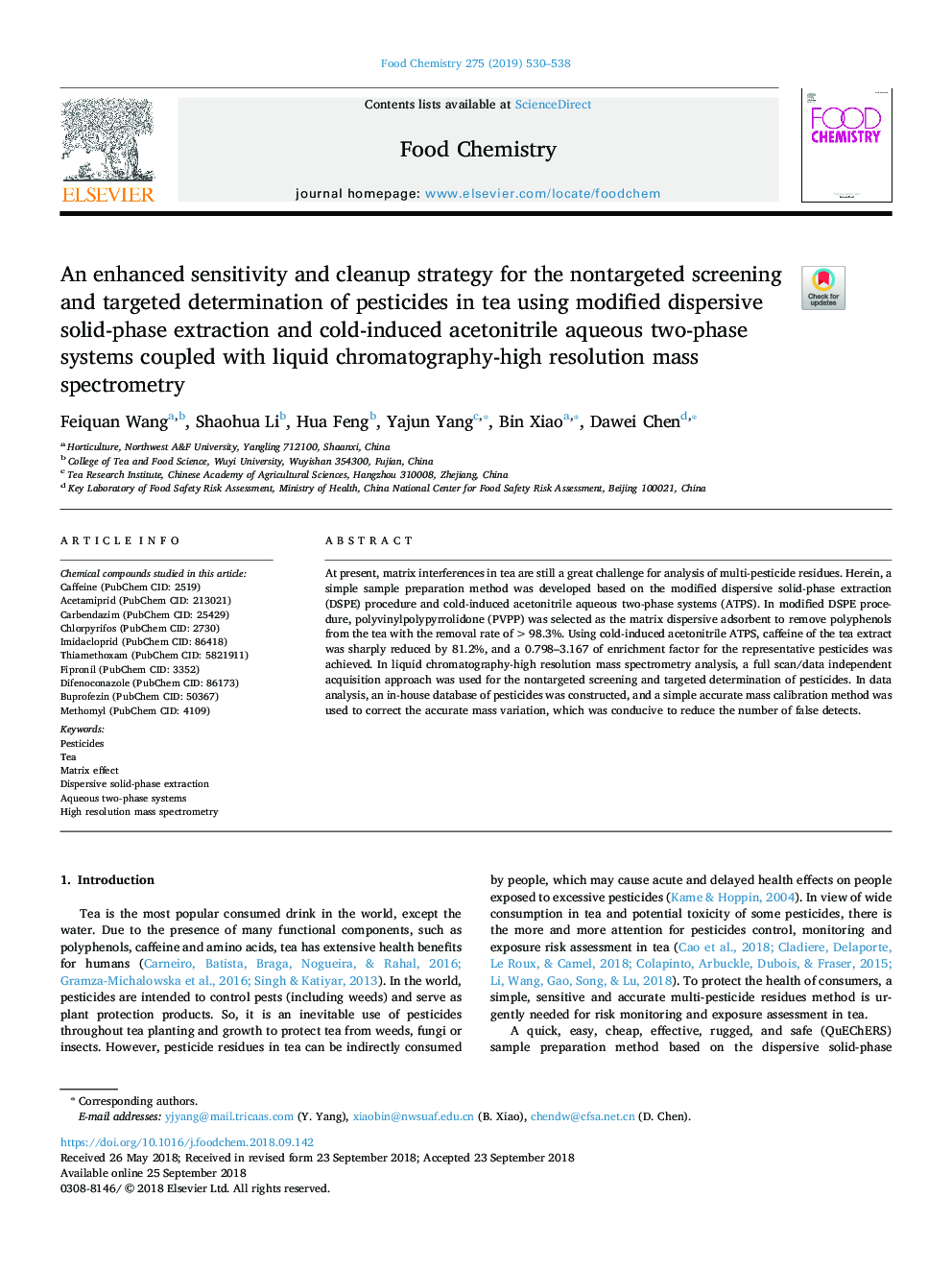| Article ID | Journal | Published Year | Pages | File Type |
|---|---|---|---|---|
| 11027426 | Food Chemistry | 2019 | 9 Pages |
Abstract
At present, matrix interferences in tea are still a great challenge for analysis of multi-pesticide residues. Herein, a simple sample preparation method was developed based on the modified dispersive solid-phase extraction (DSPE) procedure and cold-induced acetonitrile aqueous two-phase systems (ATPS). In modified DSPE procedure, polyvinylpolypyrrolidone (PVPP) was selected as the matrix dispersive adsorbent to remove polyphenols from the tea with the removal rate of >98.3%. Using cold-induced acetonitrile ATPS, caffeine of the tea extract was sharply reduced by 81.2%, and a 0.798-3.167 of enrichment factor for the representative pesticides was achieved. In liquid chromatography-high resolution mass spectrometry analysis, a full scan/data independent acquisition approach was used for the nontargeted screening and targeted determination of pesticides. In data analysis, an in-house database of pesticides was constructed, and a simple accurate mass calibration method was used to correct the accurate mass variation, which was conducive to reduce the number of false detects.
Keywords
Related Topics
Physical Sciences and Engineering
Chemistry
Analytical Chemistry
Authors
Feiquan Wang, Shaohua Li, Hua Feng, Yajun Yang, Bin Xiao, Dawei Chen,
